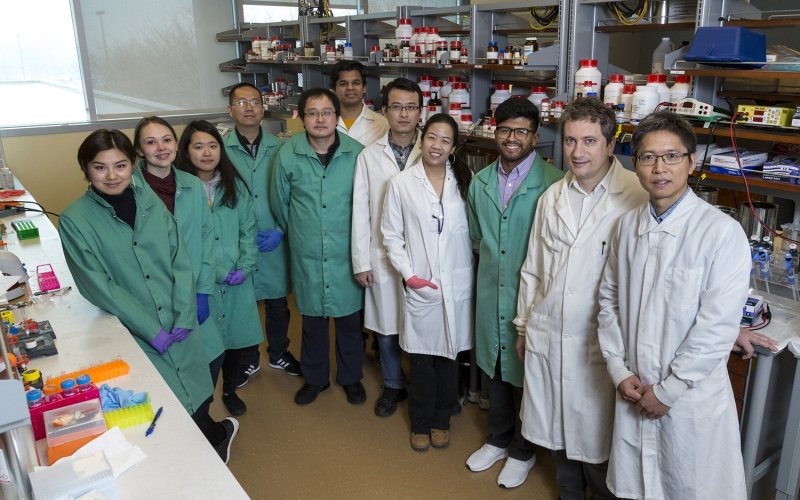Chemistry Professor Contributes to a Cancer Treatment Now in Clinical Trials

ALBANY, N.Y. (Nov. 19, 2020) – A cancer therapy that uses a chemical compound developed with the help of a UAlbany scientist has entered clinical trials.
Max Royzen, an associate professor of chemistry, partnered with San Francisco-based biotech firm Shasqi, to develop an anticancer therapy that utilizes bio-orthogonal click chemistry to target a powerful drug at cancerous tumors. Bio-orthogonal click chemistry is a process by which two highly reactive and selective for each other compounds react inside a live organism and according to Royzen, this makes it incredibly valuable in medical chemistry and in particular cancer treatment because it can target the cancerous cells while sparing healthy cells.
Royzen and a postdoctoral scientist, Kui Wu, have been collaborating with Shasqi for seven years to develop a drug delivery platform using one of the fastest bio-orthogonal click reactions, a Diels-Alder cycloaddition between tetrazine and trans-cyclooctene (TCO). The therapy involves two main components. The first involves modifying a sodium hyaluronate biopolymer to include tetrazine groups (which is later injected into the patient). The second component uses a TCO unit to administer doxorubicin, a popular chemotherapy medication used in the treatment of breast cancer, bladder cancer, certain types of sarcoma, lymphoma and leukemia. Doxorubicin, while often effective, can cause severe side effects that require treatments to stop.
In the clinical trials, a patient is first given an injection of the sodium hyaluronate biopolymer. Patients then receive five daily infusions of doxorubicin with the TCO unit, which circulates the drug through the body until it finds the sodium hyaluronate biopolymer and a click reaction occurs to bring the biopolymer and doxorubicin together. This reaction triggers the doxorubicin to touch only the tumor cells while leaving the healthy surrounding cells intact.
According to Royzen and the Shasqi team, the doxorubicin administered with the TCO unit appears to be 80 times less toxic than when administered on its own. The researchers say that in addition to reducing side effects, this method could also greatly increase the amount of doxorubicin that a patient is able to safely tolerate.
“All of us in the Royzen Lab are really excited to be a part of this process, as few compounds developed in academic labs get a chance to be tested in human clinical trials,” said Royzen, who is also an affiliate faculty member at the RNA Institute.
The study, which is currently undergoing peer-review, is expected to be published in 2021.




